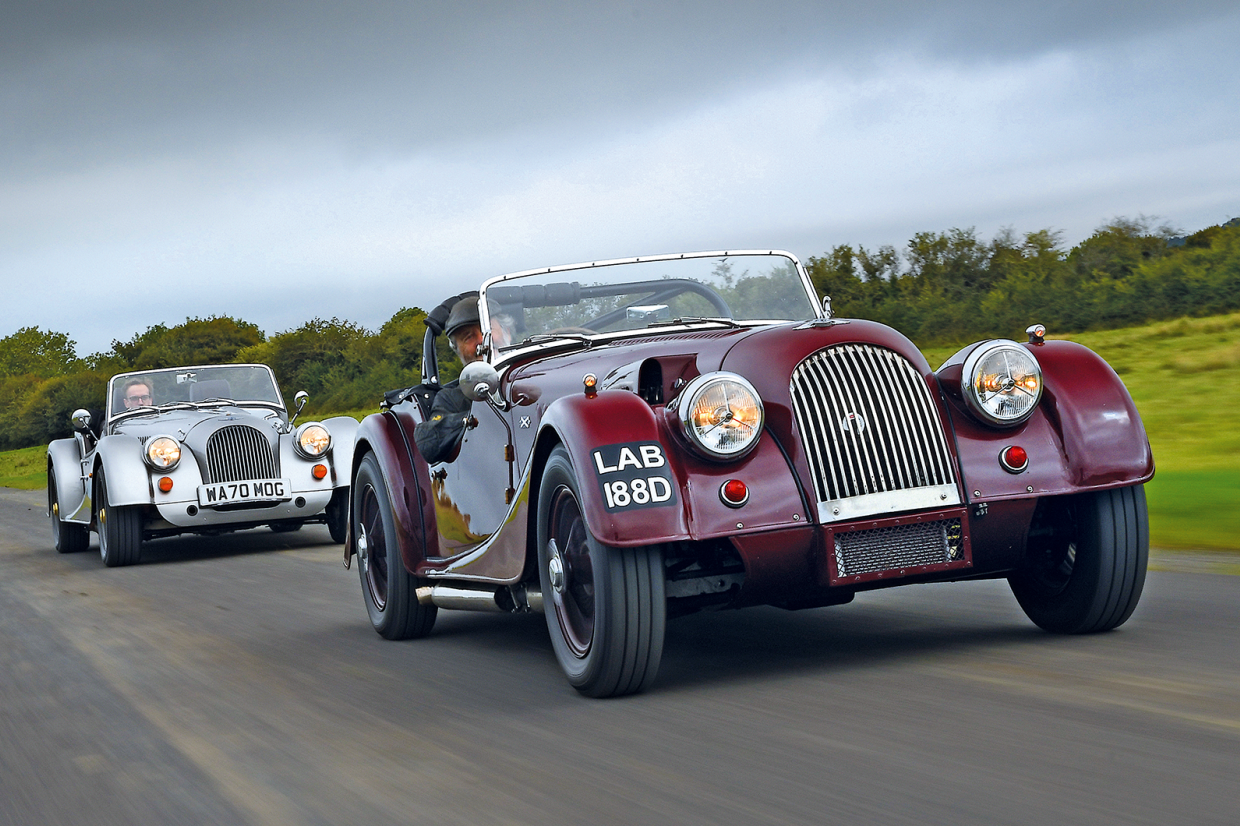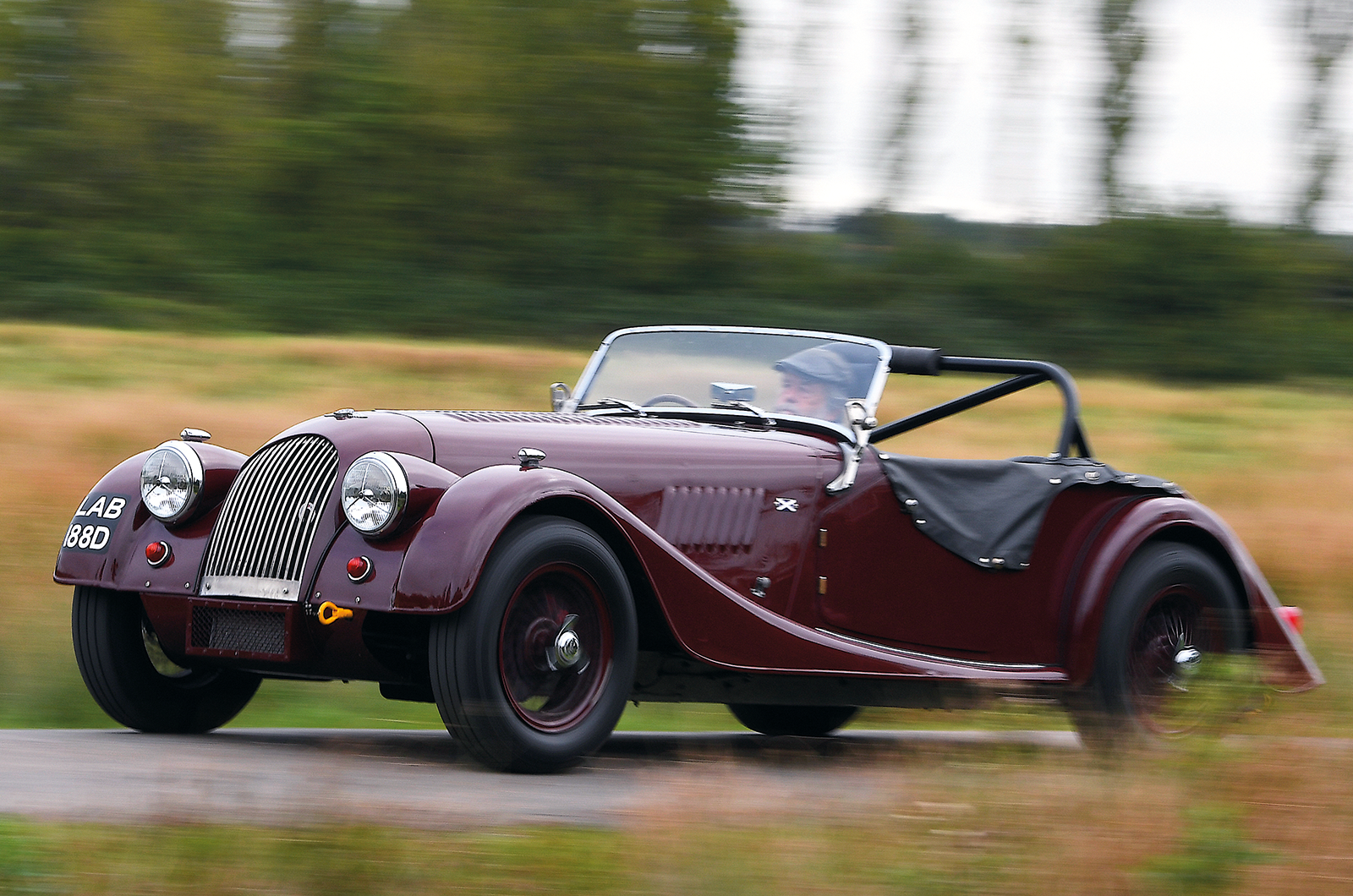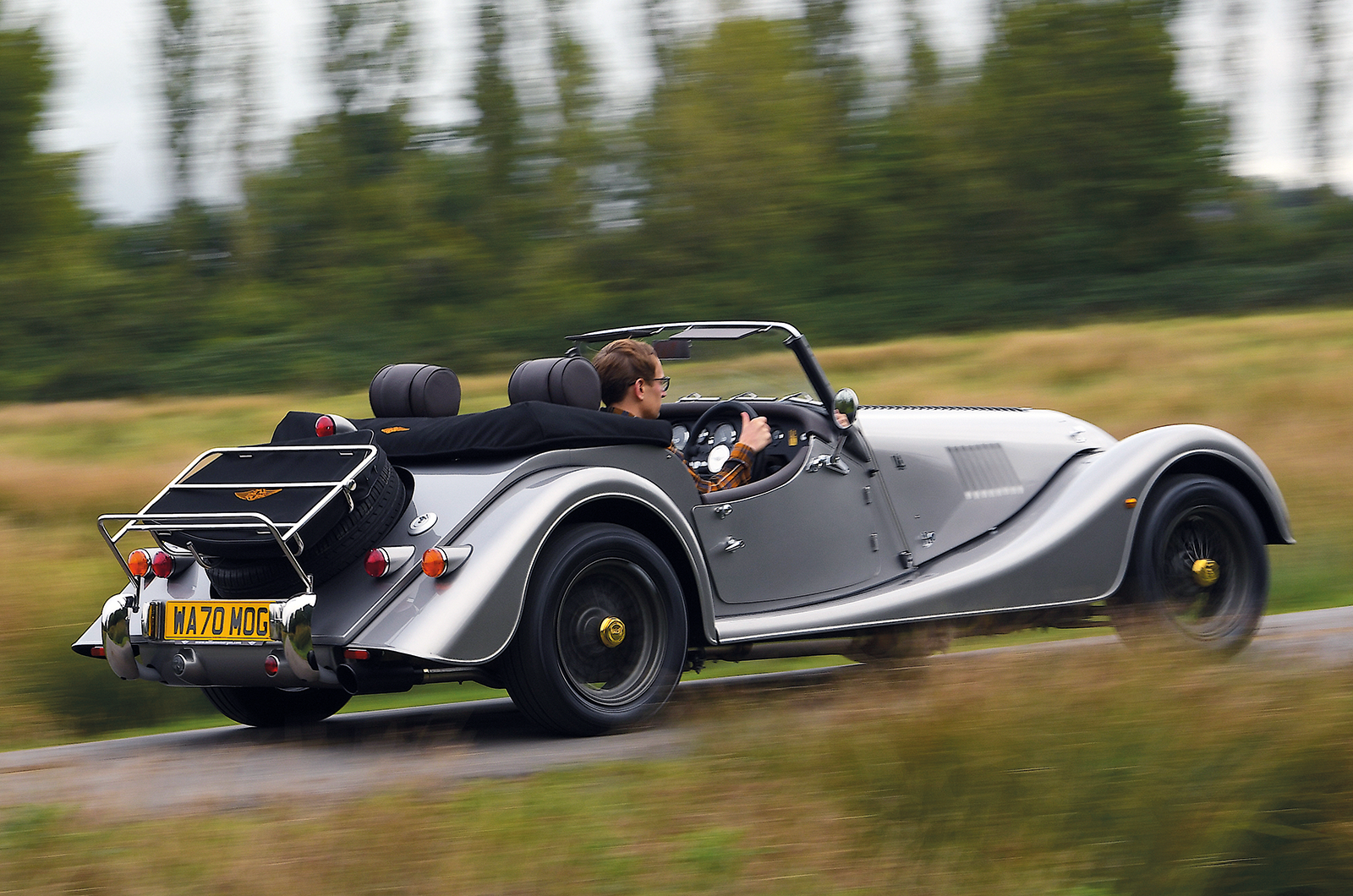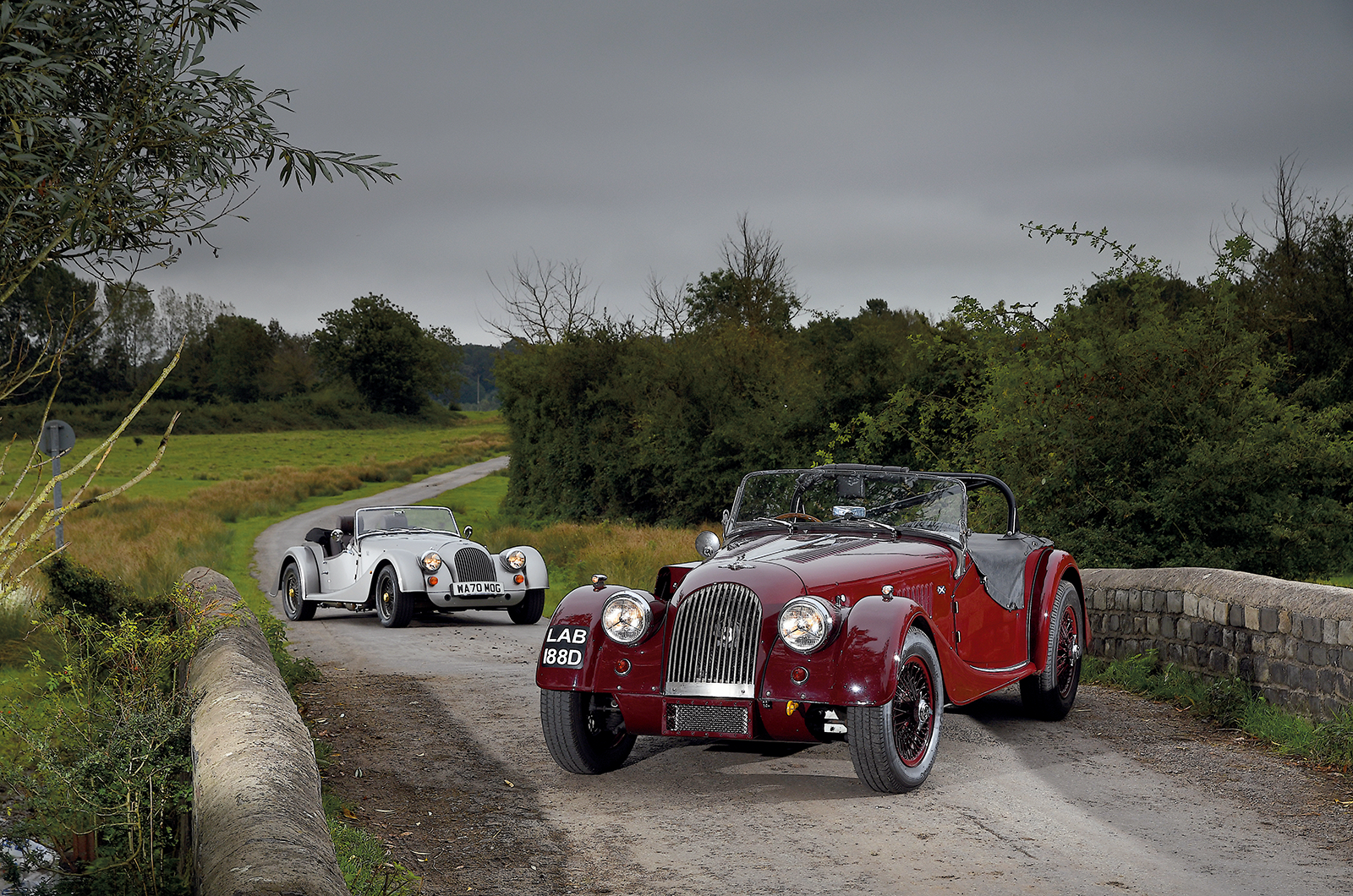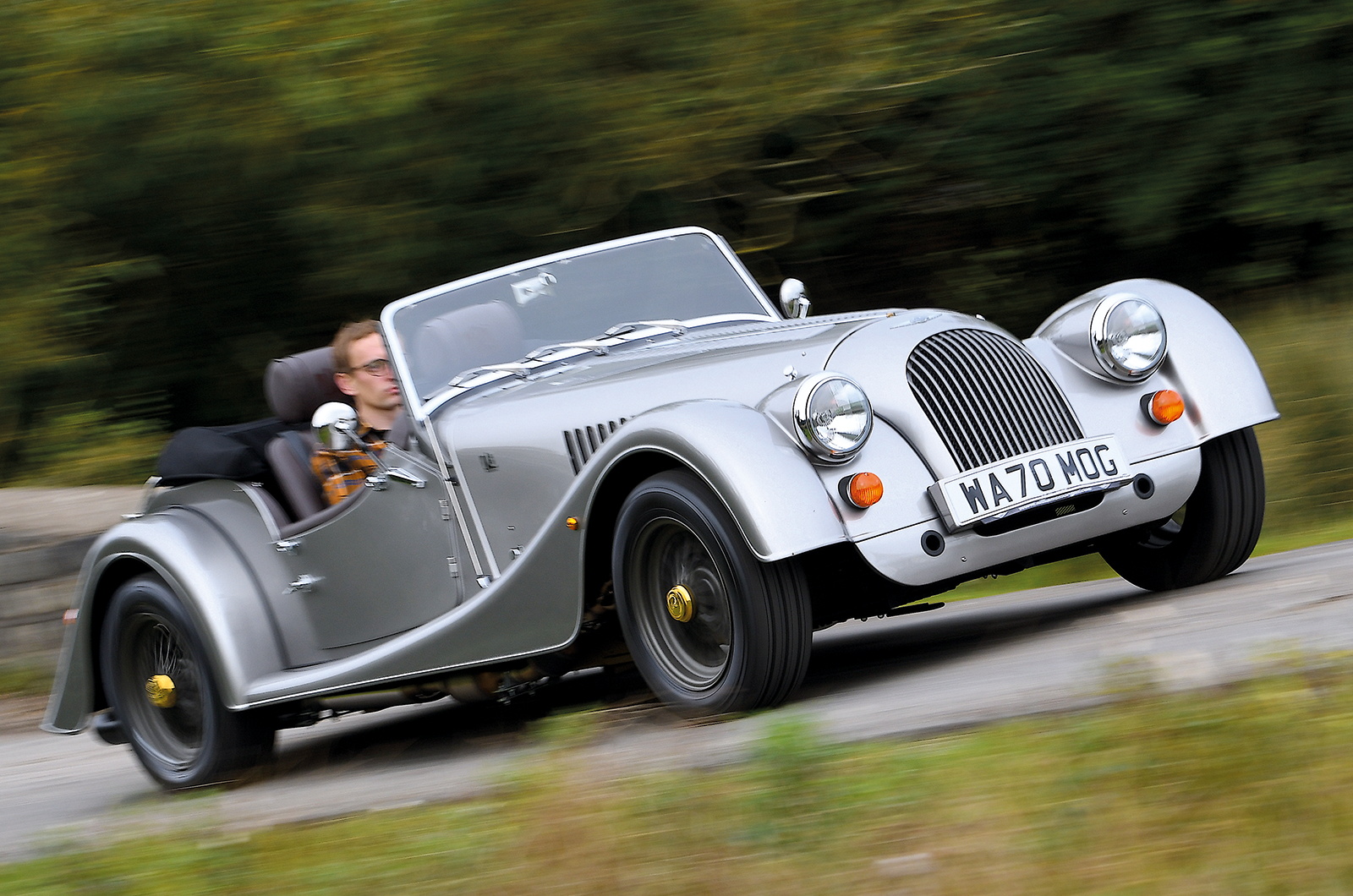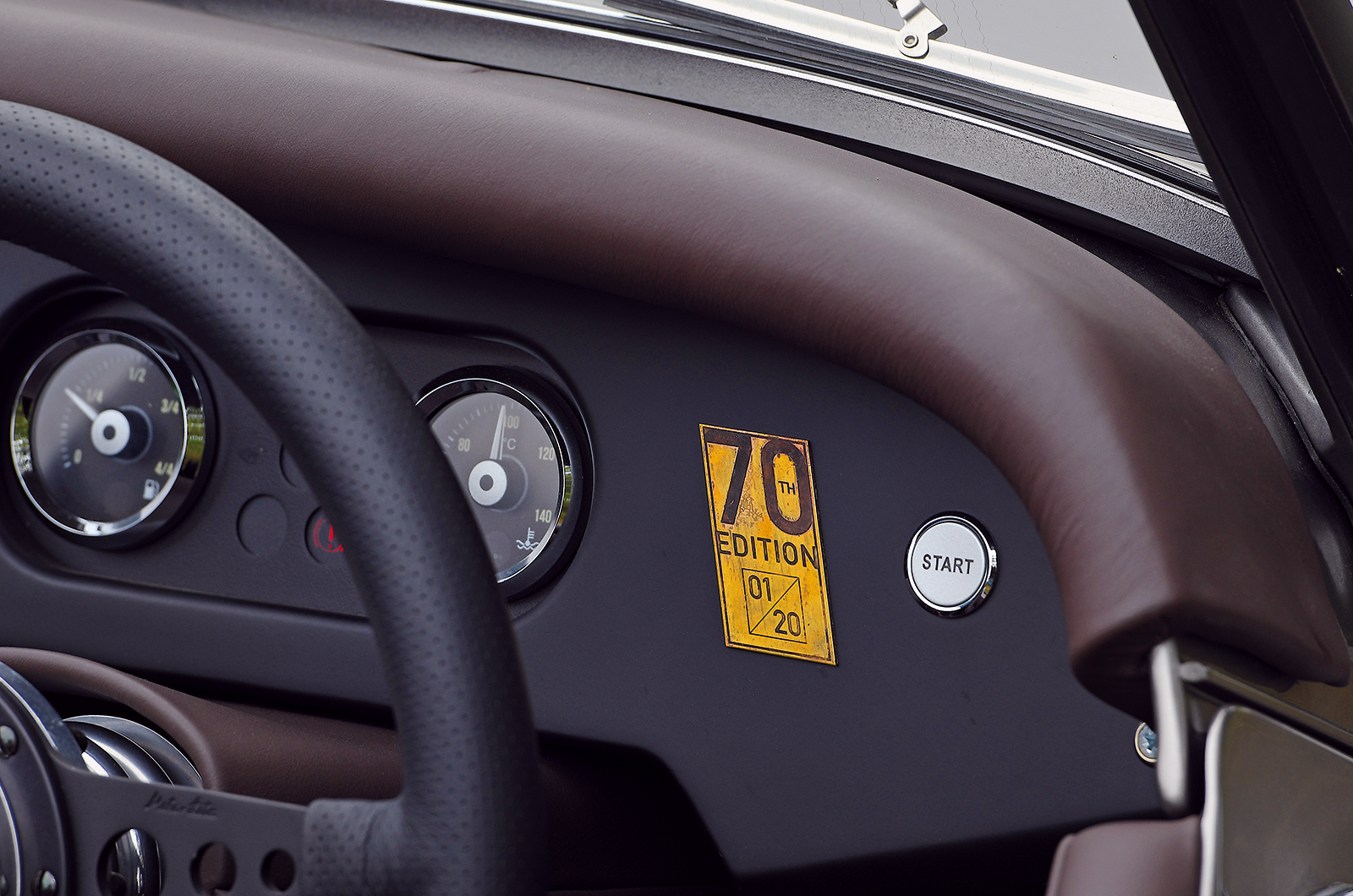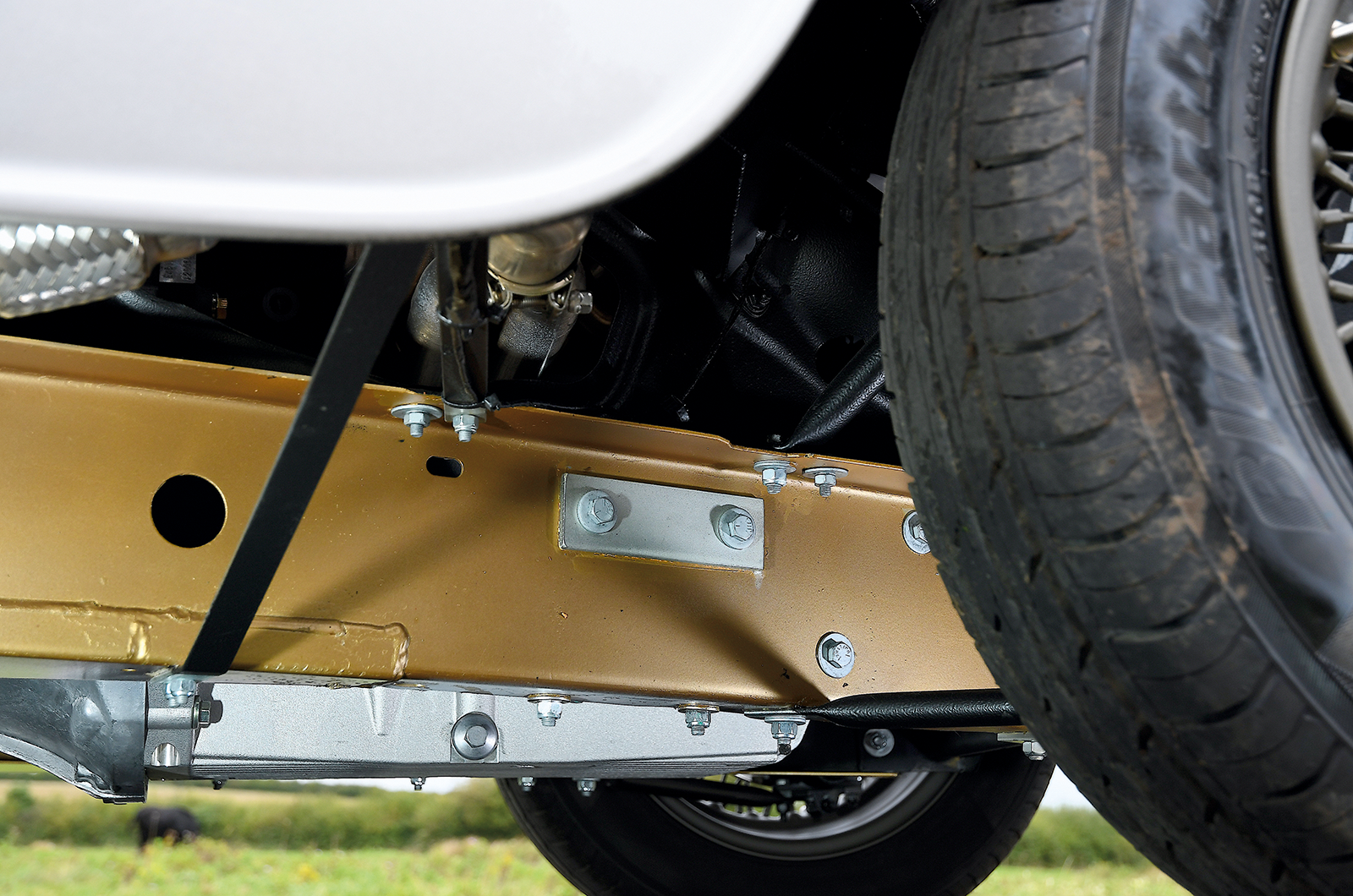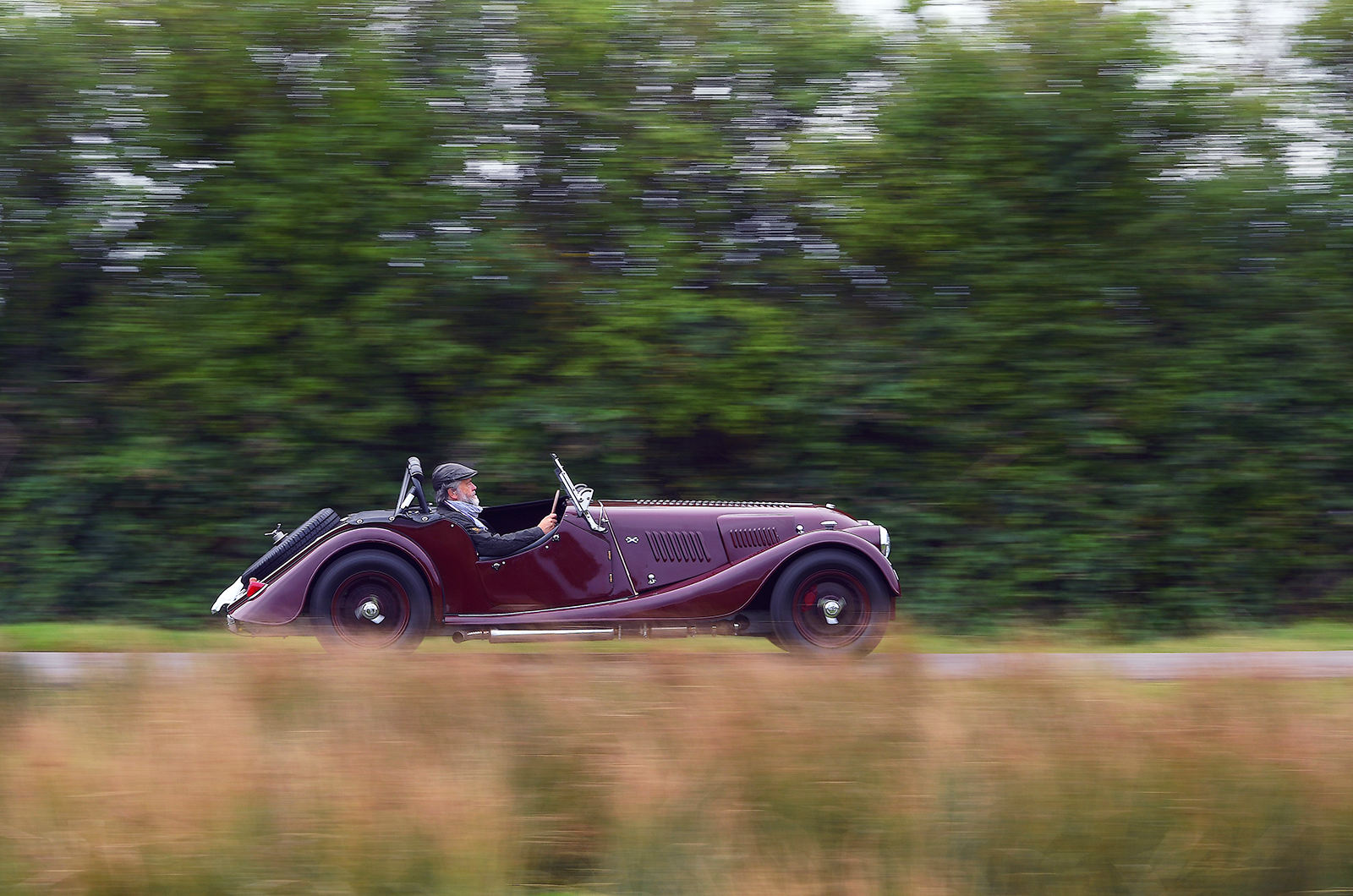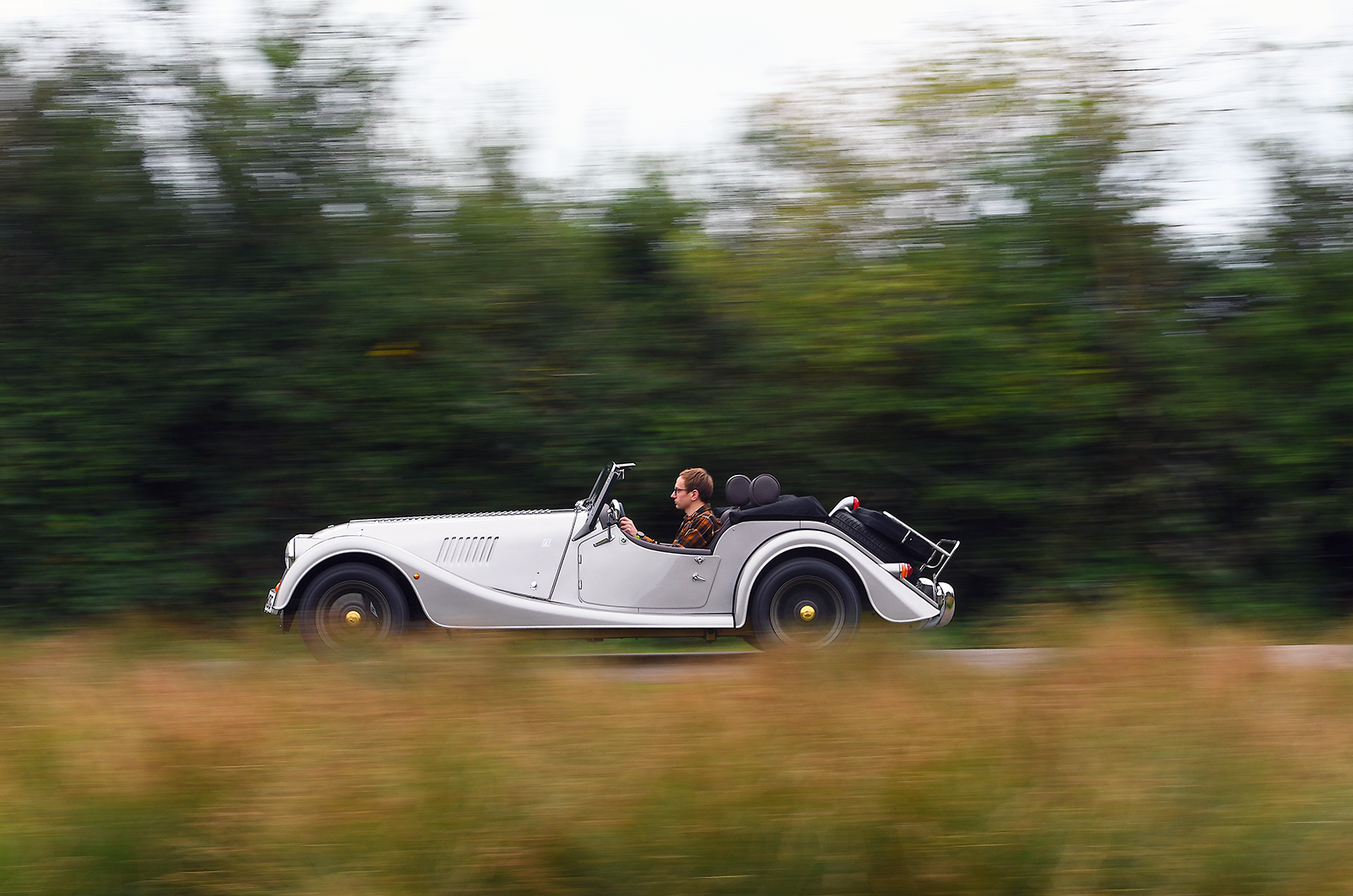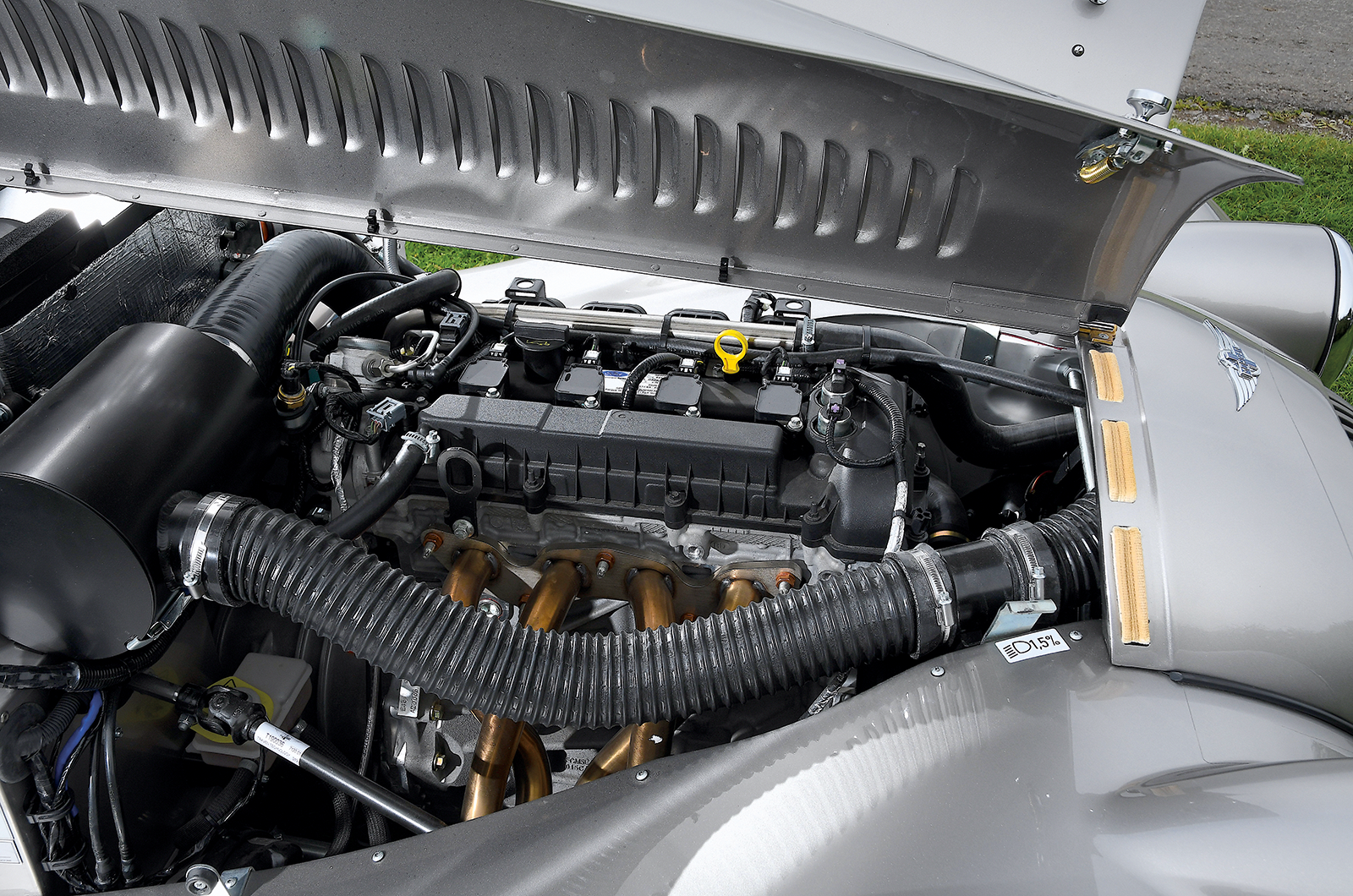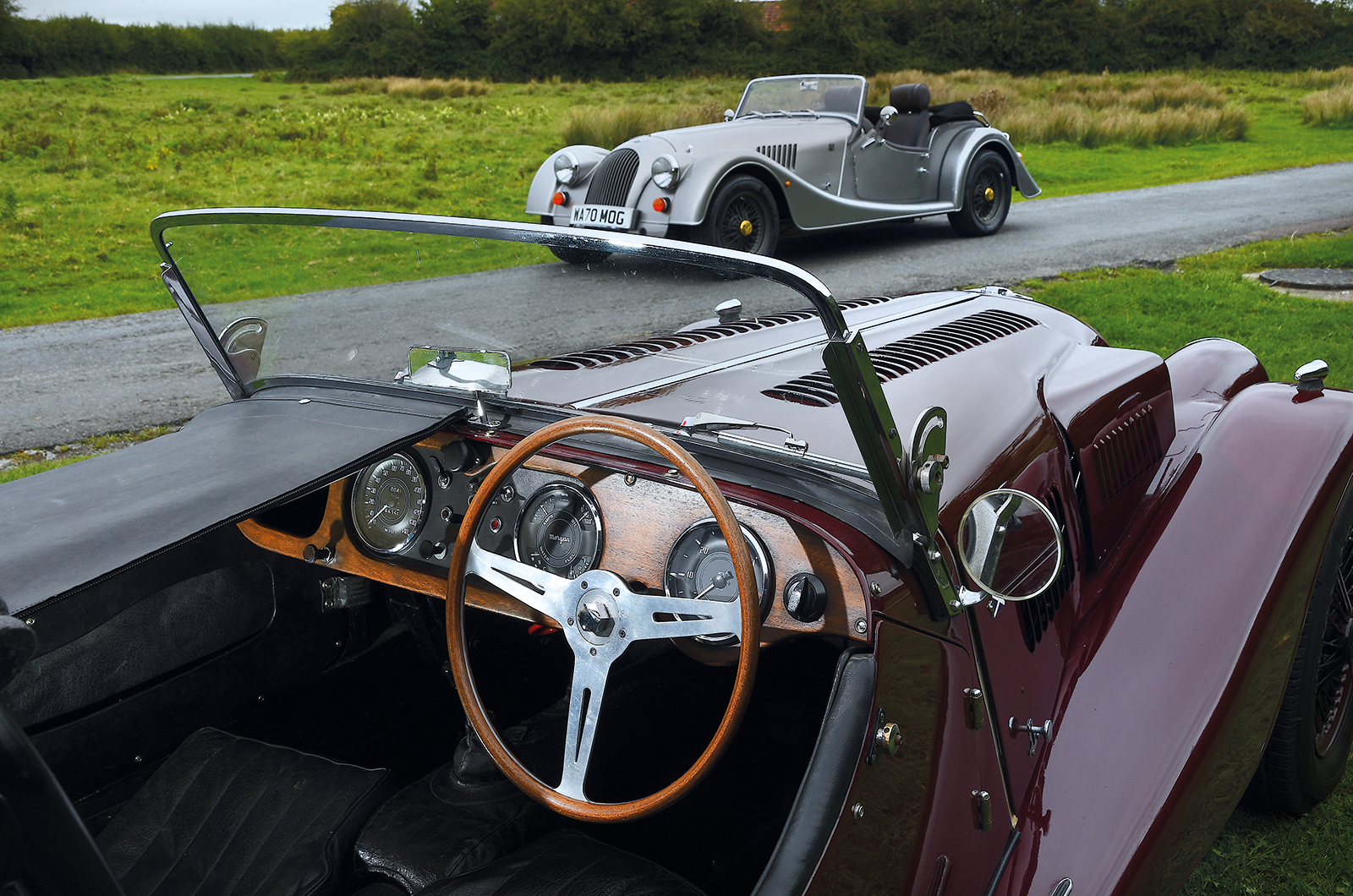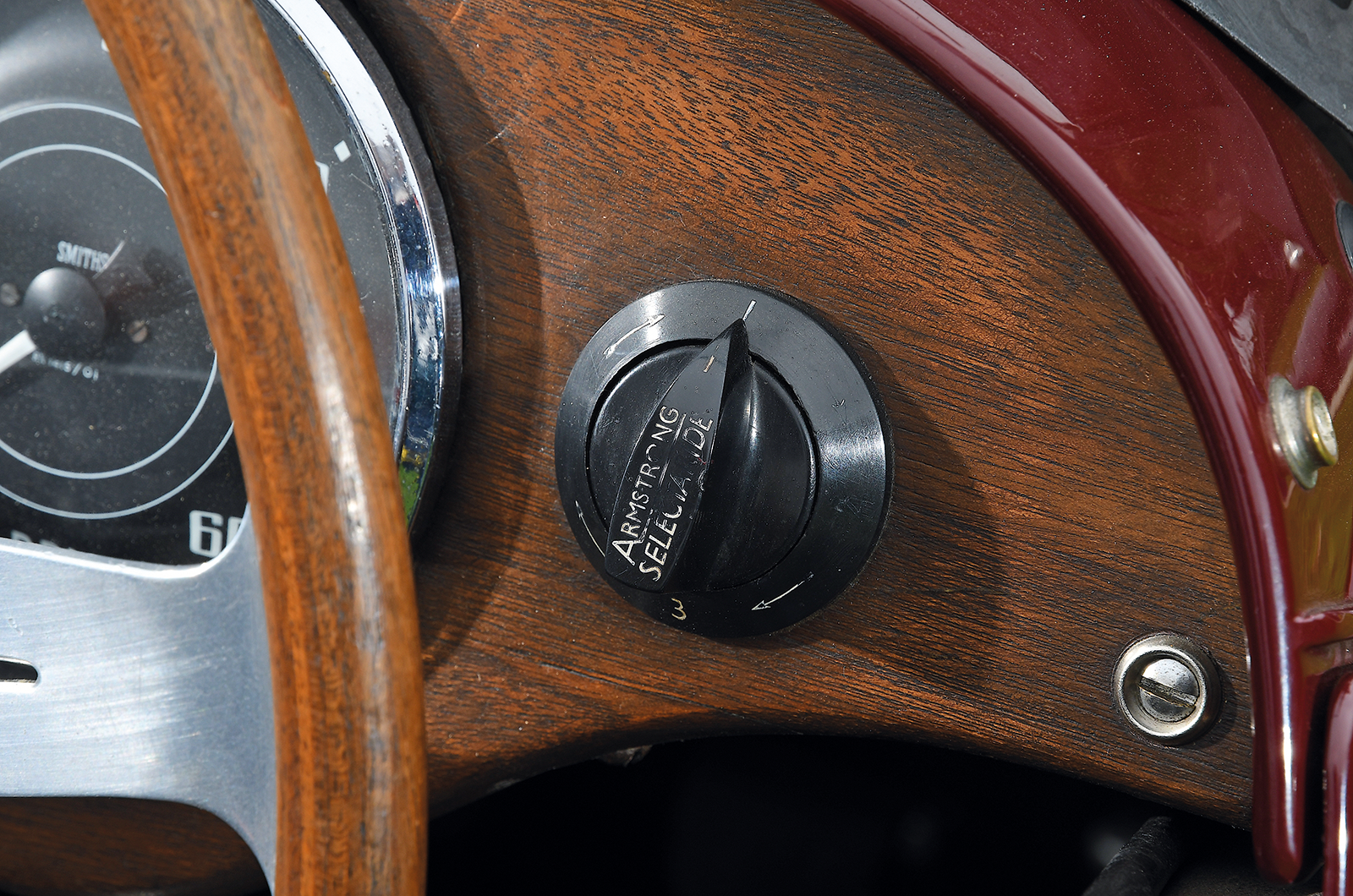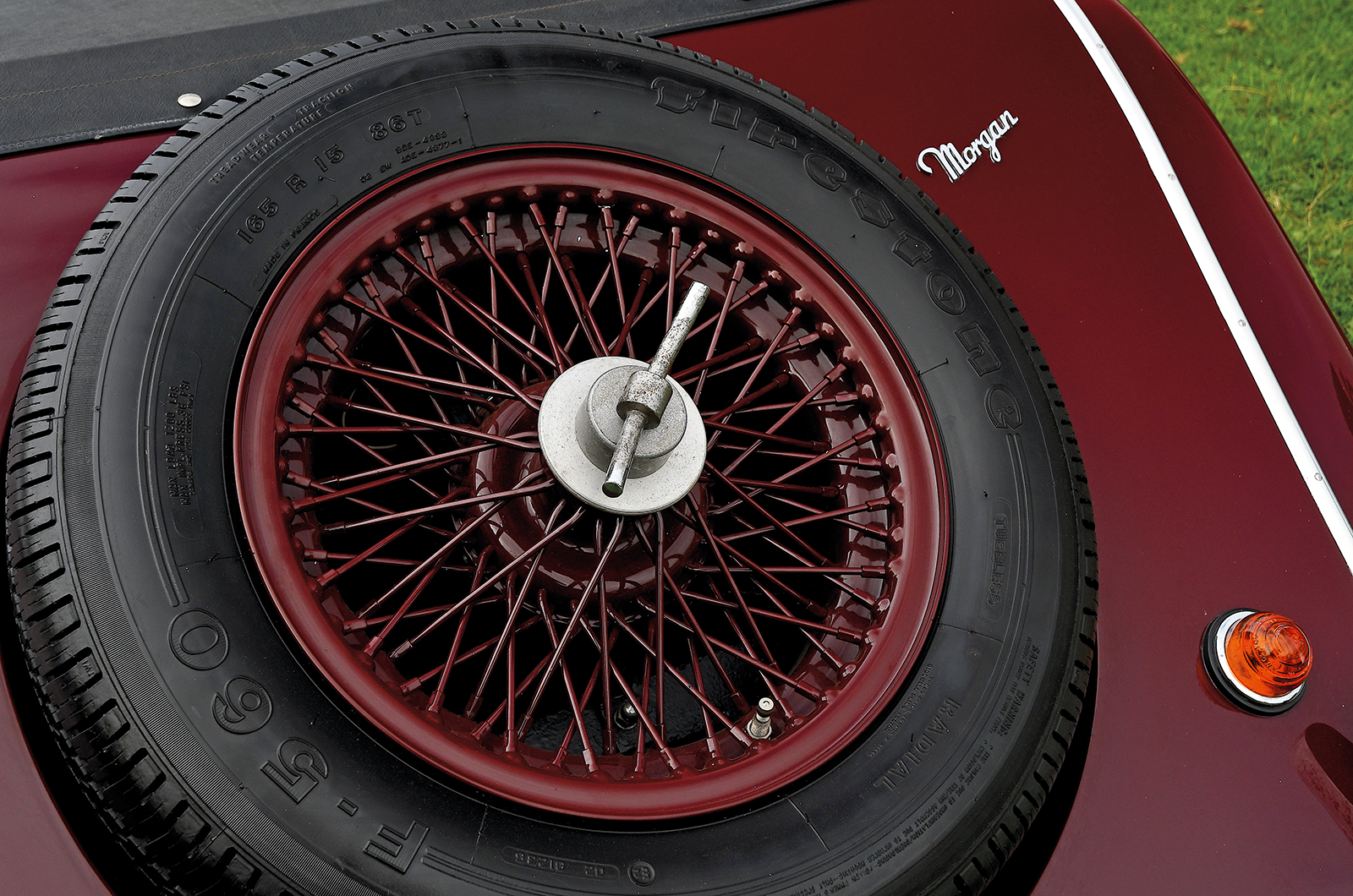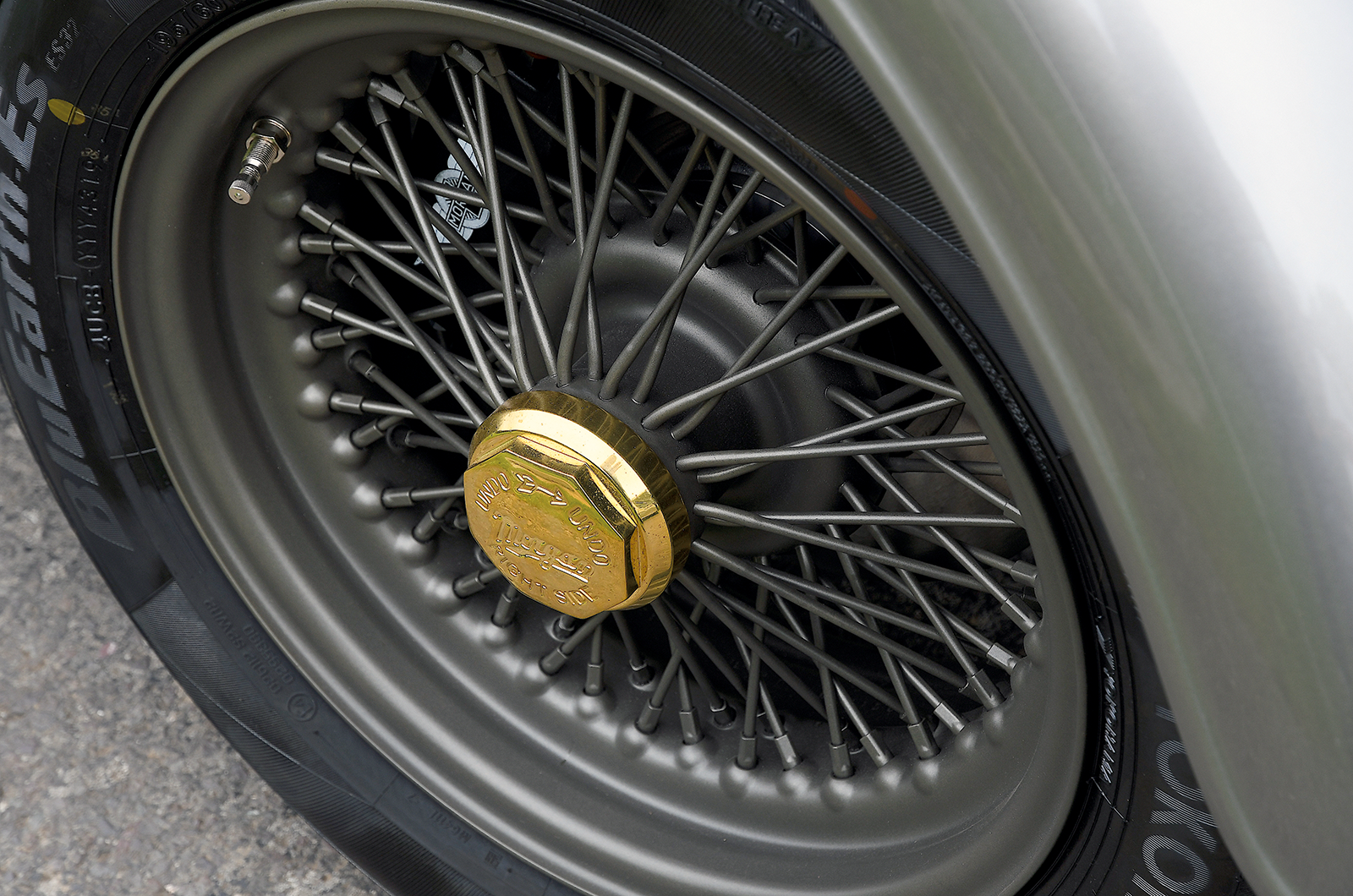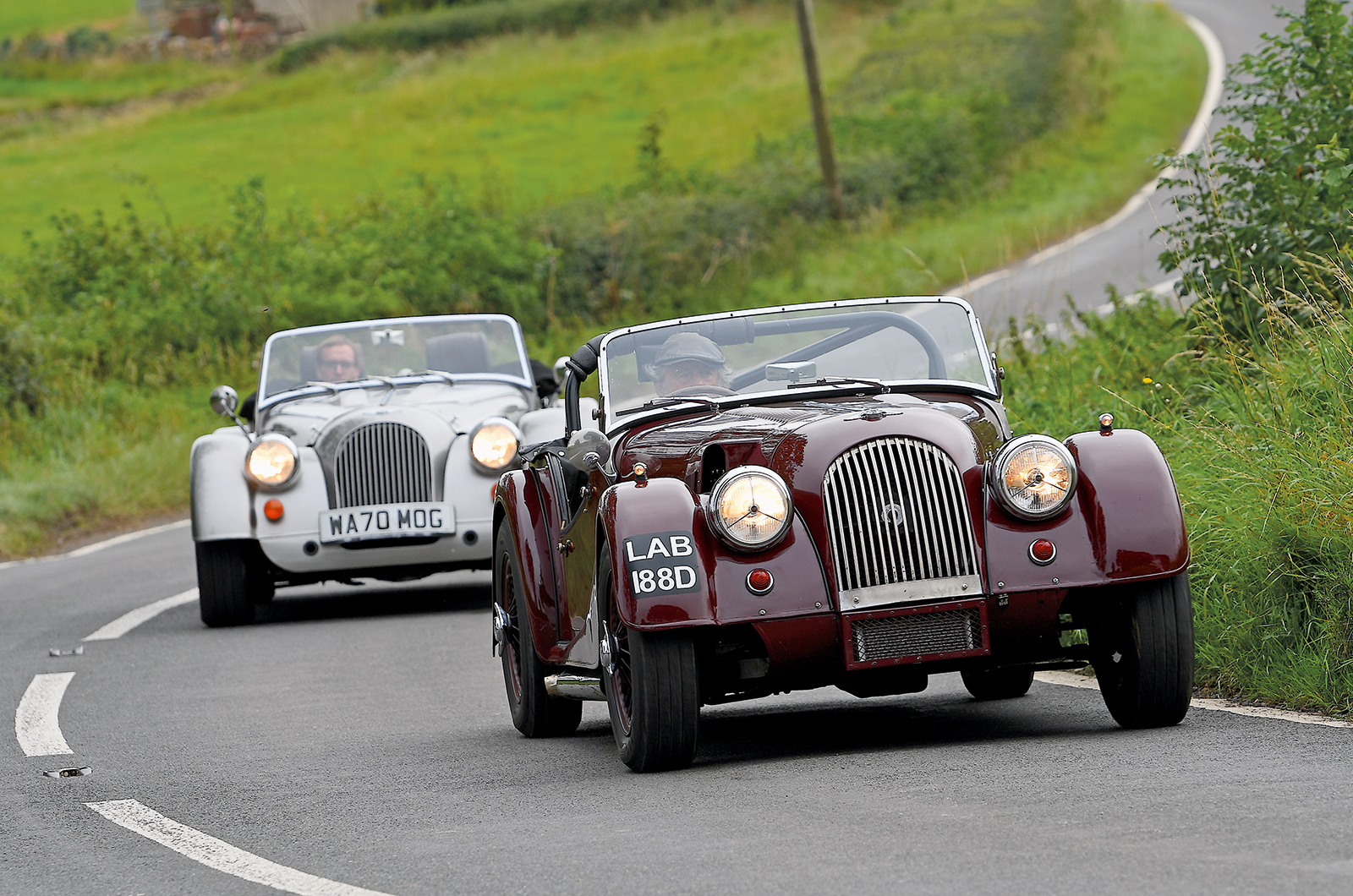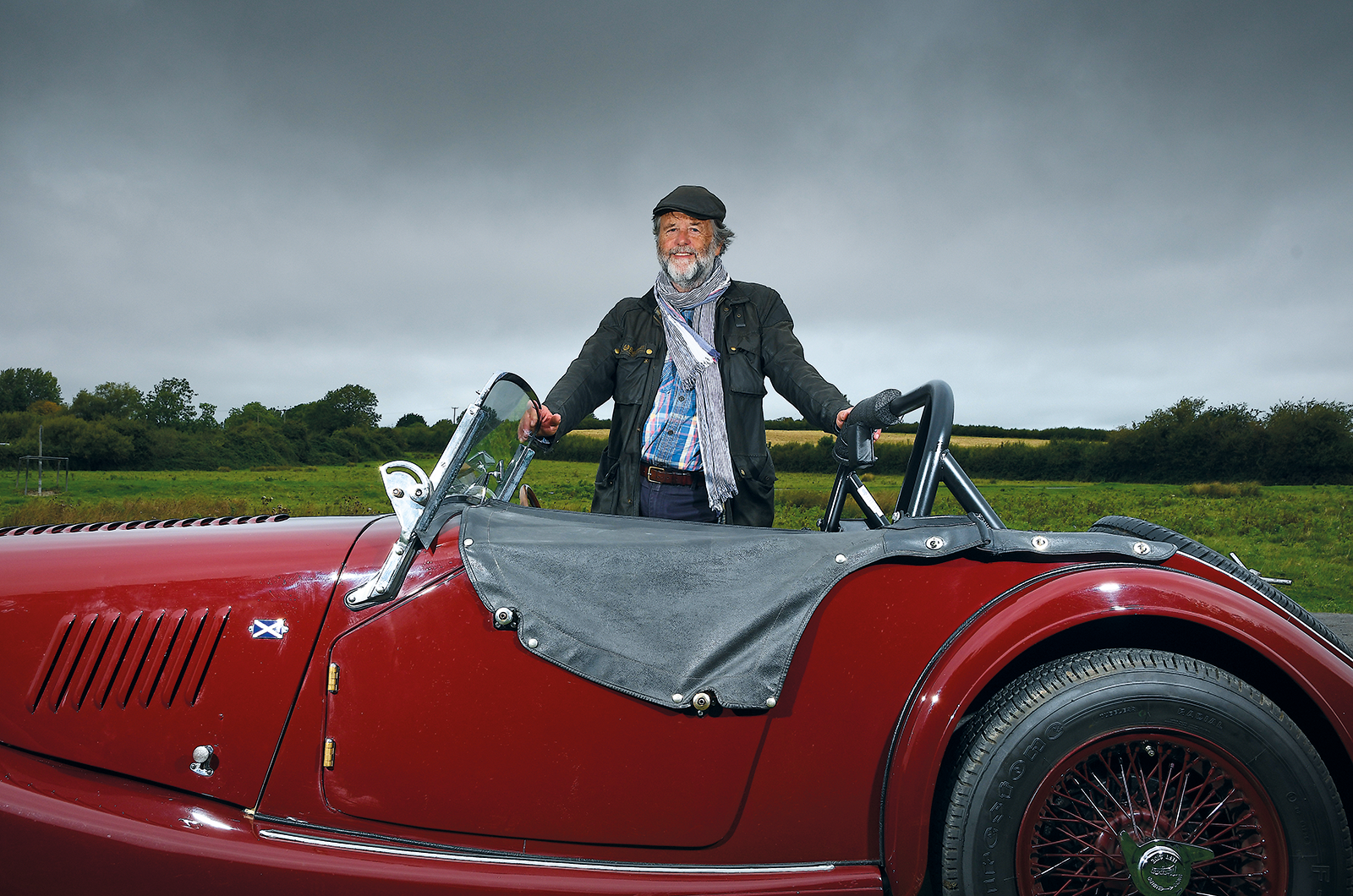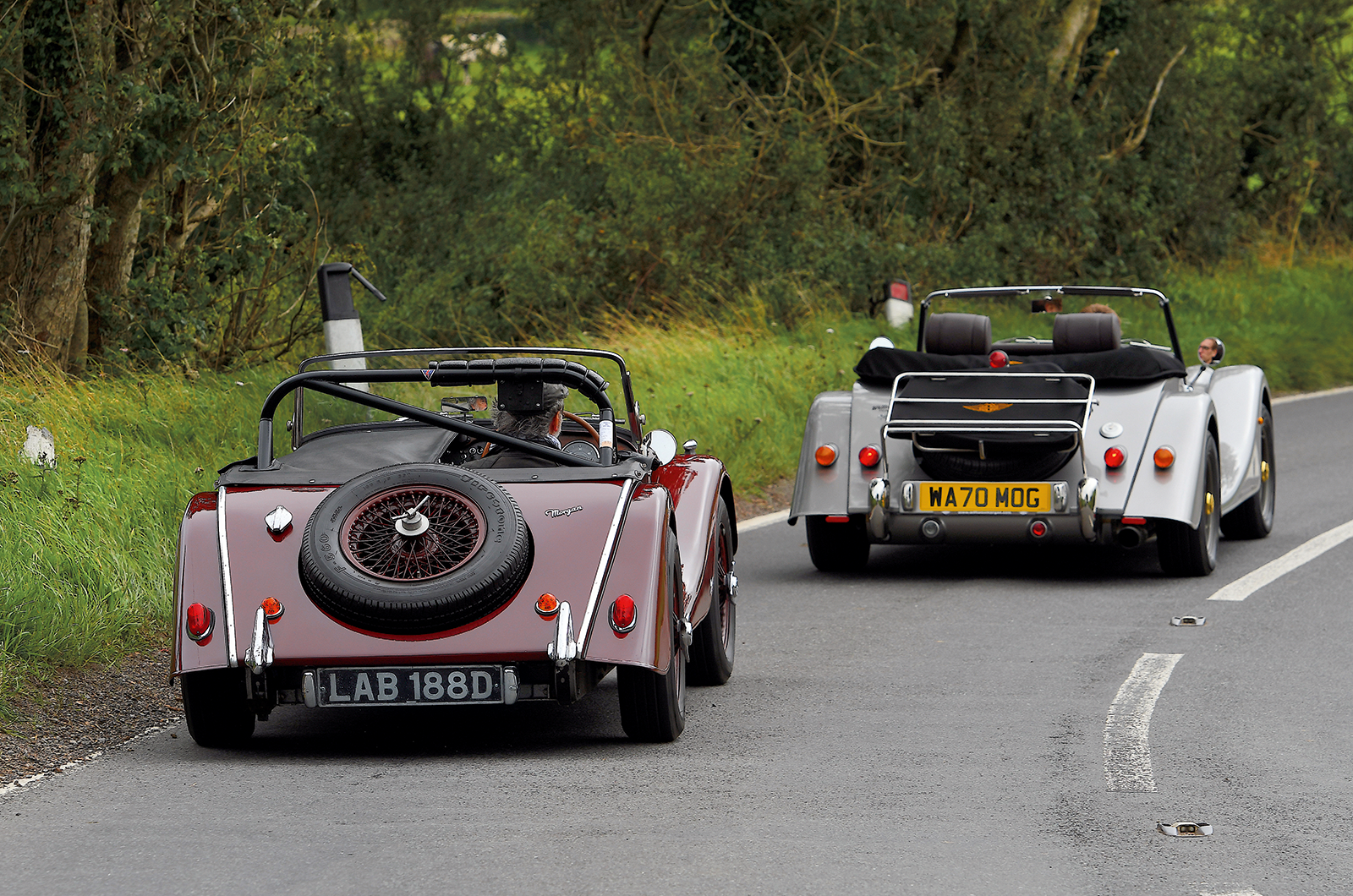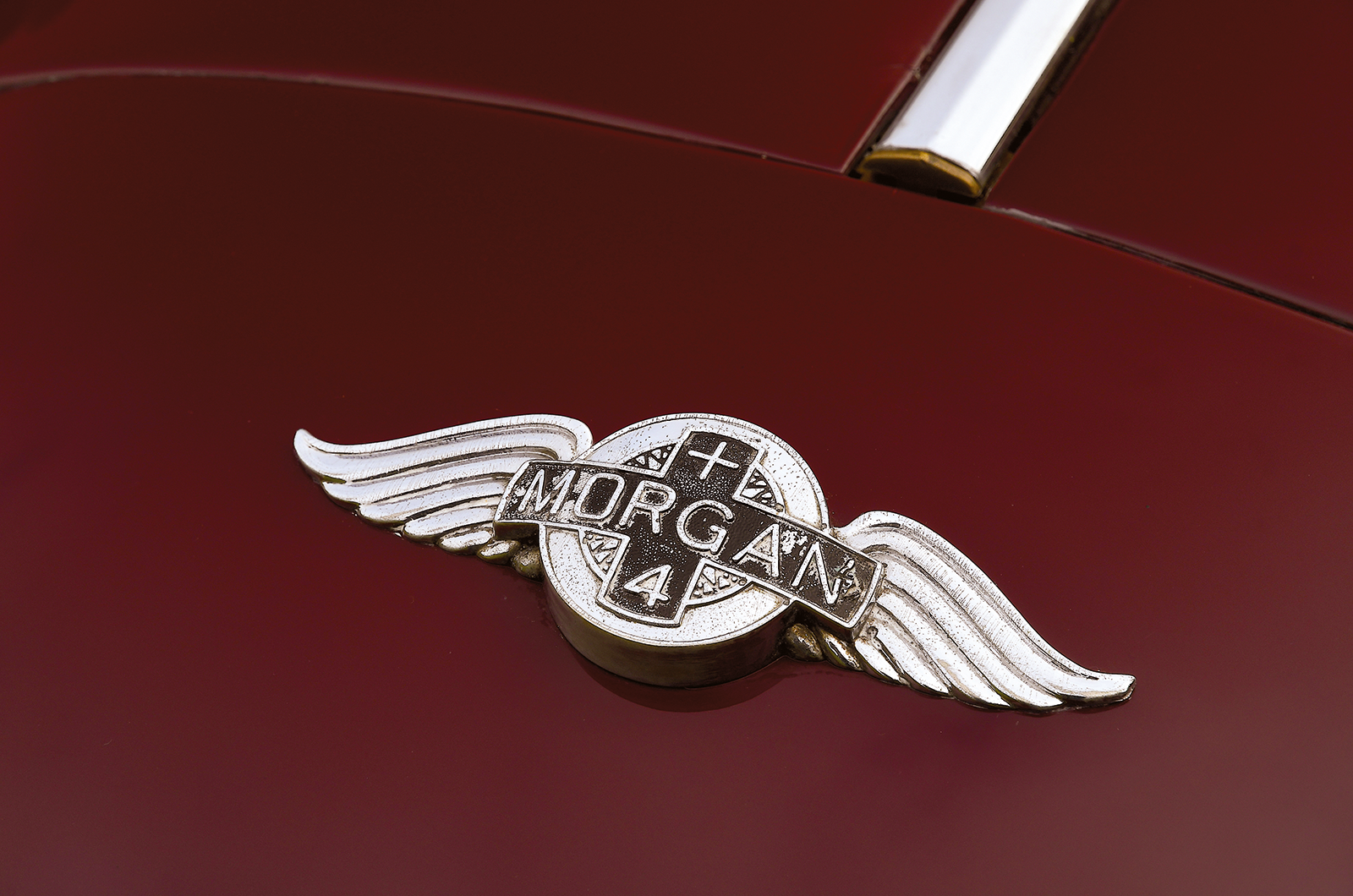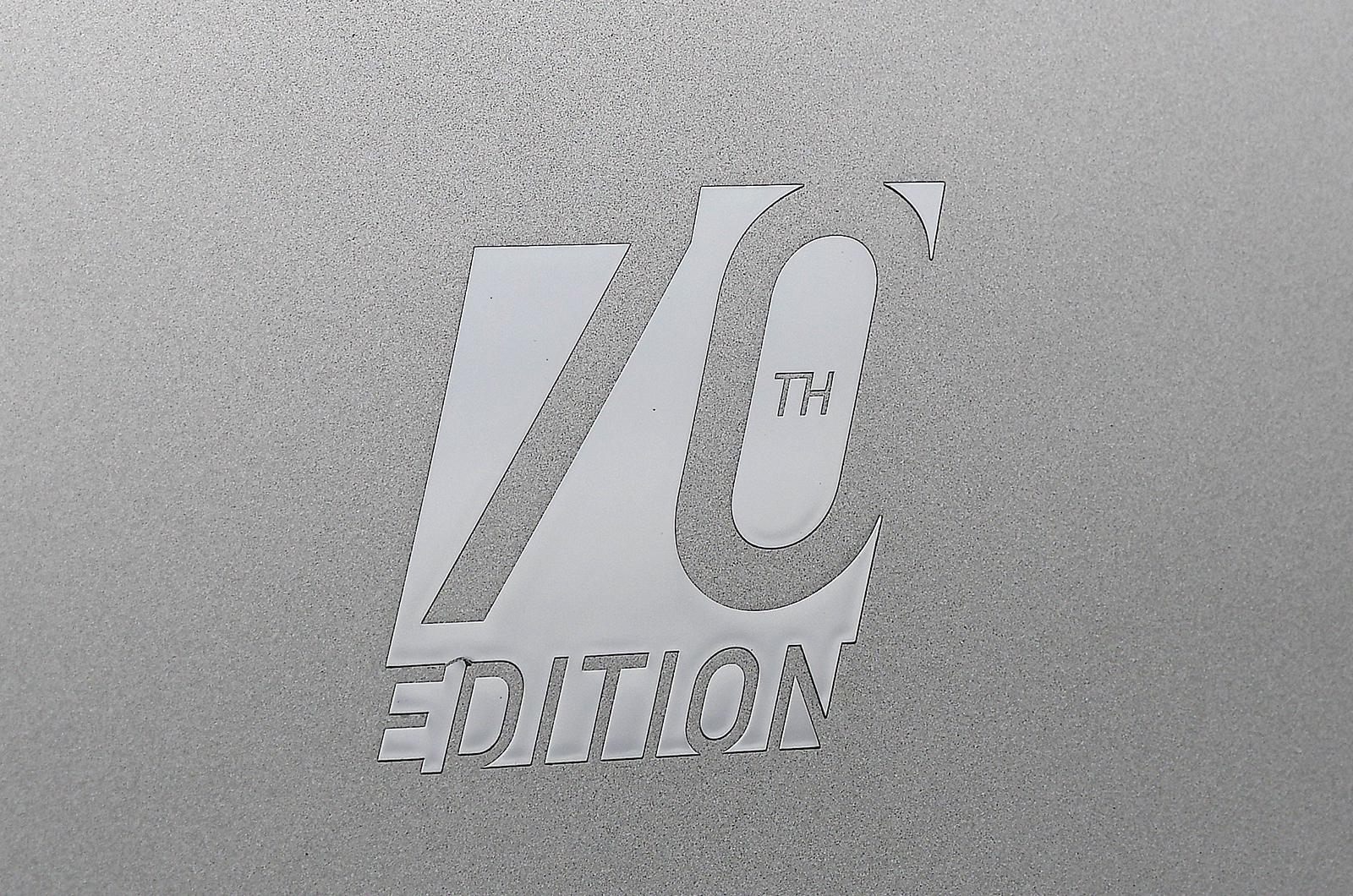The interior of the Competition is believed to be as Peter Morgan knew the car, having been registered as its first keeper owing to it being a works car for the use of a select few drivers on rallies and hillclimbs.
How often Morgan himself used the car is uncertain, but it was definitely his.
Patton is a tour guide at the factory, when he’s not liaising with the Bugatti Owners’ Club and the DVLA sorting registrations, and his connections uncovered LAB 118D’s history.
“I checked the records and realised it was the works car, which surprised me,” he says.
“I went to the county council and found it was registered to Peter Morgan, who was a keen rallyist and triallist. I was put in touch with the Morgan historian, who had bought a load of photos and in there was this car. The story is that he was developing it to be homologated like the Super Sport.”
This switch controlled the Selectaride dampers (left); the speedo sits in front of the passenger
It’s the kind of history that would normally be celebrated. “Very few people know about the car, and what it is,” Patton continues.
“When Peter Morgan sold it the car disappeared, and the chap who restored it found it as a wreck in a lock-up in Edinburgh.
“He did it sympathetically, which is nice, but he drove it to Holland and his wife hated it so he sold it. He didn’t know the history, but knew it was something different because of the Derrington four-branch manifold.
“The engine and Moss gearbox are both the factory items. You have to either be gentle with it or thrash it, and it’s original so I don’t want to.”
Painted wires
The gearbox certainly requires time, both to get to grips with it and for its changes, but with double-declutching you soon get into sync.
It communicates, somehow, when it wants you to slot into each finger, with a dab of throttle to help things along and the engine popping eagerly.
Patience pays off, everything settles down and you forget anyone else on the road. They can wait, anyway; you and the gearbox are talking.
Yet it will forgive you whatever ratio you’re in because there is so much usable torque. The exhaust note sounds almost always the same, too, though it’s perhaps more sonically pleasing from outside the car than in it. But from the driver’s seat it still sounds fantastic.
More gold detailing to mark this out as a special-edition, last-of-the-line model
Both of those characteristics are shared by the Ford-engined 70th.
It will pull from nothing, carrying its light weight with rorty ease. But play with the typically excellent Mazda ’box, so fresh and new that you really should stretch before getting in, and it will fly, skipping along feeling fleet of foot.
Hit a crack in the road and the game turns a little, as it rattles like its forebear taught it to – though not for as long or as hard. But that is all part of the theatre of a Morgan.
Neither car is spectacularly fast in the numbers sense, but with the wind buffeting across the low-cut doors, and the evocative noise all around you, it doesn’t matter. It feels just right and just fast enough.
The 70th Anniversary model is the faster car cross-country, but the Competition provides the more involving experience
Both cars also provide a solitary experience, yet in a good way: it’s just you, the car and the road – but you’ve taken someone along to chat with when you arrive at the chosen country pub.
Conversation in the cabin is possible only at walking pace, and the radio in the 70th is presumably there to tick a box.
There’s not much in the way of other conveniences, particularly in terms of luggage space. The rack over the spare on the slanted rear of the 70th is an addition that whoever buys this first edition will probably appreciate.
Patton has slightly more pressing uses for his +4 because, like its first keeper, he takes it to startlines at the foot of hills and on sprints.
Owner Patton with his discreetly significant +4 Competition
He has a more modern, Sigma-engined 4/4 for touring duties, often across France: “In that I don’t even need to take a toolkit; it’s lovely but doesn’t have the power. Get it up on the cam and it’s nippy, though.
“This ikes to be used, and if the weather’s nice I’ll take it if I’m scrutineering somewhere. I’ve never had the hood on.
“I love it, it’s so typical of late-’50s sports cars such as TRs. It’s nicely tuned, but the average hot Clio will beat you on the road. You’ll never be hugely fast – if you want that then buy a Caterham.”
As Patton elucidates, going quickly isn’t really the point of a Morgan. Instead, the thought of sweeping along sleepy, hedgerow-lined lanes, taking in the whole experience, is endlessly appealing.
And when anyone pictures a quiet, long road trip across Middle England, it’s often with the wheel of a Morgan in hand.
Fat arches betray the new car’s wide rubber, but the pace of change is glacial
Morgan should be commended, if that’s not too twee and patronising, for sticking to its values for so long instead of selling out.
Today the firm is having its Dylan-goes-electric moment with the all-new aluminium-chassised and BMW-powered Plus Four, making the 70th Edition truly the last of a breed.
And somehow that heritage breathes through the car; it feels important – new, but all the while a Morgan.
Perhaps the best compromise is a Plus 4 from ad ecade or so ago. It will owe you nothing, given that prices are as reasonable as a Morgan will get, and provide modern reliability but still with that classic Malvern feel.
But the idea of having the last of the line holds a certain sort of appeal – so too a Morgan like only one other in the land.
Owning either would uphold an important part of the tradition, but the secret history of the Competition just about swings it.
Images: John Bradshaw
Thanks to Williams Automobiles, where the 70th is for sale; Morgan Motor Co; New Elms
Factfiles
Morgan +4 Competition
- Sold/number built 1965-’69/42
- Construction Z-section steel ladder chassis with wood-framed aluminium and steel body
- Engine all-iron 2138cc ‘four’,with twin Weber or Stromberg carburettors
- Max power 104bhp @ 4700rpm
- Max torque 132lb ft @ 3000rpm
- Transmission Moss four-speed manual, with synchromesh on top three ratios, driving rear wheels
- Suspension: front independent, by sliding pillars, coil springs rear live axle, semi-elliptic leaf springs; telescopic/lever-arm dampers f/r
- Steering cam and sector
- Brakes discs front, drums rear
- Length 11ft 8in (3556mm)
- Width 4ft 8in (1422mm)
- Height 4ft 4in (1321mm)
- Wheelbase 8ft (2438mm)
- Weight 1848lb (838kg)
- 0-60mph 10 secs
- Top speed 100mph
- Mpg 30
- Price new £801
- Price now £20-50,000*
*Prices correct at date of original publication
Morgan +4 70th Anniversary
- Sold/number built 2020/20
- Construction Z-section steel ladder chassis with wood-framed aluminium and steel body
- Engine all-aluminium 1999cc ‘four’, with direct fuel injection
- Max power 180bhp @ 6000rpm
- Max torque 148lb ft @ 4500rpm
- Transmission five-speed manual, driving rear wheels
- Suspension: front independent, by sliding pillars, coil springs rear live axle, semi-elliptic leaf springs; telescopic/lever-arm dampers f/r
- Steering rack and pinion
- Brakes discs front, drums rear
- Length 13ft 2in (4010mm)
- Width 5ft 7¾in (1720mm)
- Height 4ft (1220mm)
- Wheelbase 8ft 2in (2490mm)
- Weight 2230lb (1010kg)
- 0-60mph 7secs
- Top speed 117mph
- Mpg 30
- Price new £64,995
READ MORE
Morgan megatest: every landmark model driven
Bargain ’50s greats: Healey vs Morgan vs TR2
Dream drop-tops: Aston vs Mercedes-Benz vs Citroën vs Jensen vs Rolls
Jack Phillips
Volvo-owning Jack Phillips is a contributor to and former Deputy Editor of Classic & Sports Car
